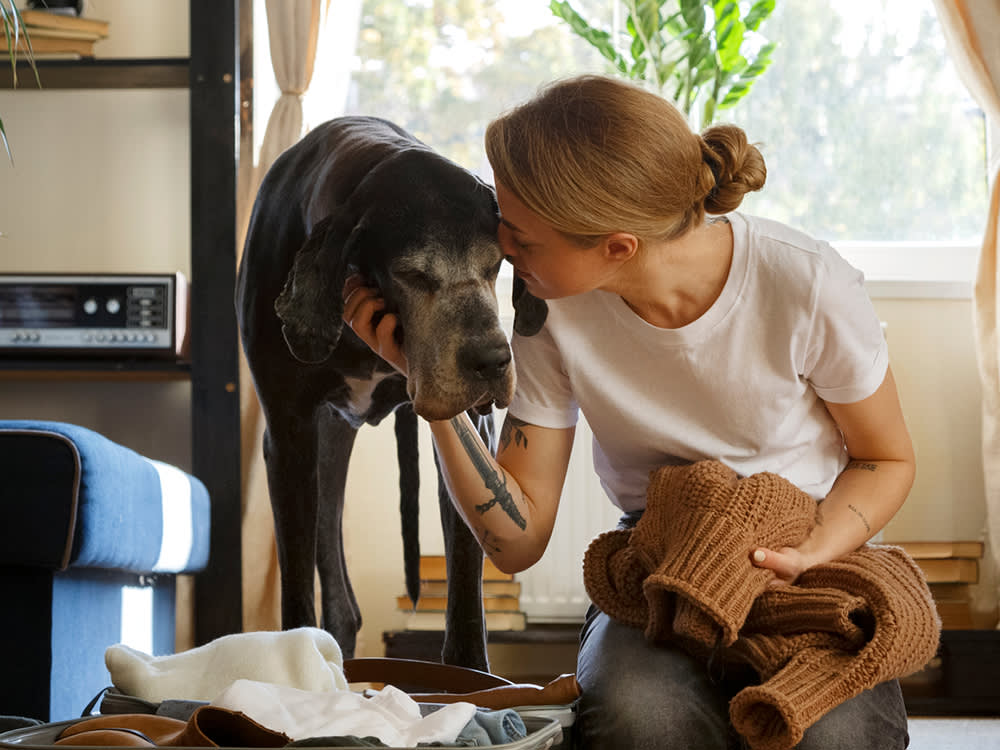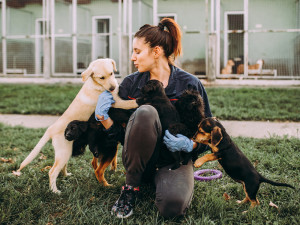How to Rehome Your Pet With Ease (and Minimal Tears)
When you realize your home or lifestyle is not a good fit for your pet, you’re put in an unenviable position. But it doesn’t have to be a lose-lose.
Rehoming a beloved family pet when unable to provide them with proper care can be heartbreaking. However, done responsibly by screening applicants gives your pet a new opportunity with a committed owner.
Step One: Research Rescue Organizations.
Contact breed-specific local rescue organizations first to surrender your pet. Many have waiting lists of thoroughly vetted applicants who want particular breeds and can suitably match your pet’s needs.
Step Two: Speak with Your Social Circle.
Speak honestly with your veterinarian and personal contacts about rehoming to see if anyone in your wider community network may be interested in adopting your pet.
Step Three: Interview Different Candidates.
Interview potential new owners thoroughly using questionnaires and conversational screening about their experience, lifestyle, current pets, and care commitment levels. Prioritize candidates demonstrating serious dedication to pets with special needs, such as behavioral or health issues.
How much do you spend on your pet per year?
Step Four: Introduce Your Pet to Potential Candidates.
Schedule meet-and-greet introductions on neutral territory first. Provide the new owner with a comprehensive medical and behavioral history and introduce your pet to them.
Step Five: Check-in With Your Pet’s New Home.
Conduct multiple post-adoption check-ins via phone on your pet’s integration into their new home after placement occurs. Be transparent about any issues needing managing and provide support resources as needed.
Step Six: Take Time for Yourself.
During this emotionally painful process, practice regular self-care. Allow yourself to fully grieve the loss of the relationship through counseling, journaling, trusted confidantes, or support groups. Seek encouragement from rehoming success stories.
Is It Time to Rehome Your Pet?
First, let’s explore some ideas to help avoid this scenario. If you’re currently in a pet-friendly rental, research options near you in the event your landlord sells the building or rent prices increase considerably. If your cat or dog is an Emotional Support Animal and is therefore allowed in many rentals, including those with no-pet policies, be sure to get a letter from your therapist supporting the therapeutic benefit they provide.
If you’re facing a steep medical bill, talk with your veterinarian about a payment plan, sign up for a medical-related credit card like CareCredit, and/or head to the interwebs to request assistance. Your local shelter may have a fund to help, or websites like Waggleopens in new tab and WeRateDogsopens in new tab crowdsource funds for pets. Better yet, consider getting pet insurance to help cover expensive unexpected treatments. If your pet is struggling behaviorally, seek out the help of a trainer or behaviorist, or call your local shelter for recommendations.
Of course, it’s not always easy to admit the fit isn’t going to work. After a few weeks with Fievel, we jumped into a routine to help with housetraining, continued slow introductions with the dogs and visitors, and generally got to know each other. Things were going fairly well until I left for a trip and my long-time pet sitter struggled to care for Fievel in my absence. His fear of strangers showed up in new ways: he stopped eating and he refused to go to the bathroom outside. When I returned home, he had reverted back to the Fievel I originally brought home: a tiny ball of anxiety.
Even so, I gave it more time, but four months into our life together, I knew my home was not ideal for him. I wasn’t taking him on adventures because he was too nervous, and my travel schedule set him back each time. Unfortunately, it became clear he’d be better off in a different situation.
How to Start the Process
Despite our best efforts, sometimes re-homing is necessary for reasons outside our control. If you adopted your pet from a shelter or rescue, reach out and let them know you’re struggling as soon as possible. Don’t be afraid of their reaction; shelters are generally pretty helpful and responsive, and there’s no shame in trying something out before deciding if it’s right.
I initially drove one of the Bigs to meet Fievel Wowskowitz. The introduction went beautifully, and I brought him home to foster for a few weeks to determine if he was the right fit. Pro tip: While some shelters and rescues may require you to finalize an adoption immediately, you can ask if you can foster an animal for a short period to find out if they’re happy in your home. This will be better for all involved in the long run. Waiting until the last minute makes things more stressful for everyone, and you might miss an opportunity to remedy the issue. If you’re able to hold onto your dog or cat temporarily, the shelter may be able to post about them online to skip spending stressful days in a shelter kennel and instead move to a new home directly.
If you didn’t adopt from a shelter or you’d like to find a new family on your own and you have a local shelter participating, Adopt-a-Pet’s Rehomeopens in new tab program is a great resource. It offers an easy-to-use four-step process to help connect you with the perfect adopter. Create an honest but fun pet profile, add some pictures, and then prepare a list of questions you’d like to ask potential families. Try to keep the conversation open-ended. “Yes/no” questions like “Can you afford veterinary care?” tend to close down the dialogue. Instead, ask, “My dog has a chronic medical condition that costs approximately $100 per month. Is that something you’re comfortable treating for the rest of his life?”
Finding the Right New Home
When going through Rehome, its dedicated team will give you all the help you need to select the best potential adopters. They’ll guide you through the often intimidating task of setting safe and pressure-free meetings with applicants. Given the uncertainty of the pandemic, this can feel more stressful than usual, so Rehome’s guidelines are especially insightful. Best of all, the company is free for those placing pets up for re-adoption, only requiring a small fee for the new owners equal to that of a shelter.
If you do need to surrender your pet to a shelter or rescue, it can admittedly be a bit stressful. Be sure to check out their website to learn about the process, and then call with any questions you have. You may need to submit an online form or talk with someone beforehand to provide as much information as you can about your pet. It can be tempting to hold back that Fluffy likes to occasionally poop on your kitchen rug or has a real taste for the UPS delivery person, but be open so the shelter has the information to support your pet while they’re in the shelter and in finding their next home. The shelter may have a fee for surrender to help offset their costs, but if you’re facing financial difficulties, they may be able to waive it. On the day of your appointment, bring any medical records, a bed or blanket, favorite toys, photos, and a description your pet.
After only a few weeks of working with the shelter, they found an incredible family with lots of experience with small dogs who didn’t travel much and had zero interest in hiking mountains. We chatted on the phone at length about his quirks (and his gifts) and then scheduled a time for them to meet. They were a perfect match, and he warmed up to them immediately. I felt guilty and sad to see him go, but they promised to stay in touch, and to this day they call a few times a year to tell me how wonderful he is (minus the occasional poop he leaves next to the bed).
Also, be sure to take care of yourself. Rehoming a pet can be exhausting and emotionally draining. You may not feel supported through the process and have feelings of guilt, sadness, and grief. Those are very normal reactions. And while we can’t be in your shoes completely, remember that many of us have been in the same situation — even professional dog trainers.




